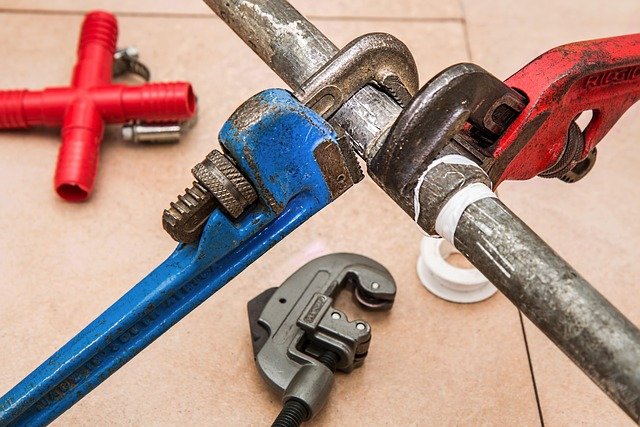Invisible Doors Are The New Thing In 2025! Learn More About This And Maybe Do It Yourself
Home design trends are constantly evolving, and 2025 has brought us one of the most intriguing innovations yet: invisible doors. These architectural marvels are transforming how we think about space, privacy, and aesthetics in modern homes. Whether you're looking to create a secret room, maximize space efficiency, or simply add a touch of mystery to your living space, invisible doors offer an exciting solution that combines functionality with cutting-edge design.

What Are Invisible Doors?
Invisible doors, also known as hidden doors or concealed doors, are ingeniously designed entryways that blend seamlessly into their surrounding walls, making them virtually undetectable to the casual observer. These doors are crafted to match the exact texture, color, and pattern of the adjacent wall surface, whether it’s wallpaper, paint, wood paneling, or even bookshelf facades.
The concept isn’t entirely new, but recent advances in hardware technology and manufacturing techniques have made invisible doors more accessible and reliable than ever before. Modern invisible doors utilize sophisticated pivot systems, magnetic latches, and precision-engineered frames that allow for smooth operation while maintaining their concealed appearance.
These doors serve various purposes, from creating private home offices and panic rooms to hiding storage areas, wine cellars, or entertainment spaces. They’re particularly popular among homeowners who value both functionality and the element of surprise that comes with a well-executed hidden entrance.
How Can You Install Invisible Doors In Your Home?
Installing invisible doors in your home requires careful planning and precise execution. The process typically begins during the framing stage of construction or major renovation, as proper structural support is crucial for the door’s operation and longevity.
The first step involves determining the door’s location and ensuring the wall can accommodate the specialized hardware. Most invisible doors require a thicker wall cavity than standard doors to house the pivot mechanisms and ensure smooth operation. Professional installers often recommend reinforcing the surrounding studs to handle the door’s weight and movement.
The hardware selection is critical to the door’s success. High-quality pivot systems, typically installed at the top and bottom of the door frame, allow for smooth rotation while maintaining the door’s alignment with the surrounding wall. Magnetic or touch-latch systems eliminate the need for visible handles, preserving the door’s invisible appearance.
Surface preparation is where the magic happens. The door panel must be finished to match the surrounding wall exactly. This might involve applying matching paint, wallpaper, or even mounting false elements like faux books or artwork. Professional installers often use specialized mounting systems that accommodate the door’s movement while maintaining the illusion.
For DIY enthusiasts, invisible door kits are available, though professional installation is recommended for optimal results. The project typically requires skills in carpentry, drywall work, and finish application, making it a challenging but rewarding undertaking for experienced home renovators.
What Are The Average Costs for Installing Invisible Doors?
The cost of installing invisible doors varies significantly based on size, complexity, hardware quality, and installation requirements. Understanding these costs helps homeowners budget appropriately for this unique home improvement project.
Basic invisible door installations typically start around $1,500 to $3,000 for standard-sized doors with simple finishes. Mid-range projects, featuring higher-quality hardware and more complex surface treatments, generally cost between $3,000 to $6,000. Premium installations with custom finishes, specialized features, or complex structural modifications can range from $6,000 to $15,000 or more.
| Door Type | Provider/Installer | Cost Estimation |
|---|---|---|
| Basic Invisible Door Kit | The Murphy Door Co. | $1,500 - $2,500 |
| Premium Bookshelf Door | Creative Home Engineering | $3,000 - $8,000 |
| Custom Hidden Panel Door | SecretDoorman | $2,500 - $6,000 |
| Professional Installation | Local contractors | $500 - $2,000 |
| DIY Hardware Kit | Amazon/Home Depot | $800 - $1,800 |
Prices, rates, or cost estimates mentioned in this article are based on the latest available information but may change over time. Independent research is advised before making financial decisions.
Several factors influence the overall cost. Custom sizing adds approximately 20-30% to the base price, while specialized finishes like hand-painted murals or custom millwork can double the project cost. Structural modifications, such as reinforcing walls or adjusting framing, typically add $500 to $2,000 to the total project cost.
Labor costs vary by region and installer expertise. Professional installation by specialized contractors commands premium rates but ensures proper function and longevity. Many homeowners find the investment worthwhile given the complexity of achieving a truly invisible appearance.
Planning Your Invisible Door Project
Successful invisible door installation requires thorough planning and consideration of your home’s specific needs. Location selection is crucial, as the door must integrate naturally into the room’s design while providing access to the desired space.
Consider the door’s intended use when planning your project. Frequently accessed areas benefit from smoother, more robust hardware systems, while occasional-use doors can utilize simpler mechanisms. The surrounding decor should complement the door’s concealment, whether through strategic furniture placement or integrated design elements.
Building codes and permits may apply to your invisible door project, particularly if it involves structural modifications or creates new living spaces. Consulting with local authorities ensures compliance and prevents potential issues during home sales or inspections.
Professional consultation during the planning phase often proves invaluable, even for DIY projects. Experienced installers can identify potential challenges, recommend appropriate hardware, and suggest design modifications that improve both function and concealment.
Conclusion
Invisible doors represent an exciting frontier in home design, offering unique opportunities to enhance both functionality and aesthetics in modern living spaces. While the investment is significant, the combination of increased privacy, space efficiency, and the undeniable appeal of a hidden entrance makes invisible doors an attractive option for discerning homeowners. With proper planning, quality materials, and skilled installation, these remarkable architectural features can transform your home into something truly extraordinary, proving that sometimes the most impressive innovations are the ones you can’t see.




